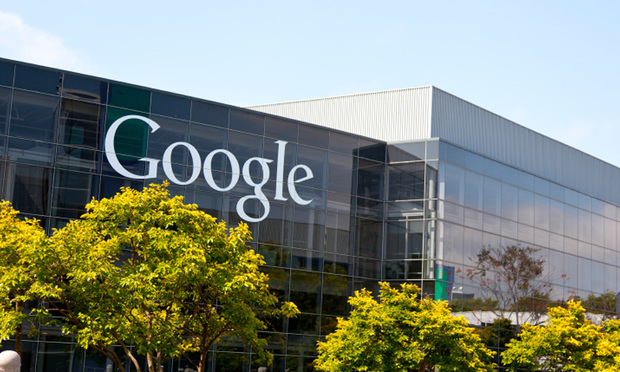SAN FRANCISCO — Google is taking its copyright dispute over java APIs to the U.S. Supreme Court, and it’s brought a new analogy with it.
Google Inc. petitioned for certiorari this week in Oracle v. Google, seeking to reverse a U.S. Court of Appeals for the Federal Circuit decision that applied copyright protection to the declaring code—what Google calls “the basic vocabulary words”—used to organize the Java programming language.
Google is accusing the Federal Circuit of making the same mistake with copyrights that led to a Supreme Court smackdown last June on the issue of patent eligibility. It’s invoking a 20-year-old decision on software copyrights from the U.S. Court of Appeals for the First Circuit that fell one vote short of Supreme Court approval. And it frames the complex, technology-heavy dispute by arguing that Oracle Corp. has no more right to copyright the Java command structure than the Remington typewriter company would have had to block others from using the QWERTY keyboard arrangement.
“That design was original and creative, but Remington was not entitled to appropriate the investments made by others in learning how to use it,” King & Spalding partner Darryl Joseffer wrote in Google’s petition. “Otherwise, Remington could have monopolized not only the sale of its patented typewriters for the length of a patent term, but also the sale of all keyboards for nearly a century.”
This argument extends a battle of analogies that began more than two years ago when Keker & Van Nest partner Robert Van Nest wheeled a file cabinet into U.S. District Judge William Alsup’s courtroom, arguing for Google that the declaring code was a system for organizing data that can’t be copyrighted. Application developers rely on that system to write innovative new programs for mobile devices, he argued.
On Oracle’s behalf at the Federal Circuit, Orrick, Herrington & Sutcliffe partner E. Joshua Rosenkranz conjured Ann Droid, a fictitious publisher who steals the chapter titles and topic sentences from every paragraph of a Harry Potter novel. Google simply didn’t want to pay a license for 7,000 lines of computer code developed by Sun Microsystems Inc. and Oracle at the cost of hundreds of millions, he argued.
The Federal Circuit sided with Oracle, stoking the debate over intellectual property rights and interoperability of computer programs. The appellate court ruled that Oracle could copyright the structure, sequence and organization of its Java application program, but that Google may try to assert a fair-use defense.
Google is urging the Supreme Court to adopt the First Circuit’s position from 1995′s Lotus Development v. Borland International, which held that the structure of a computer menu is a “method of operation” not copyrightable under §102(b) of the Copyright Act. The Supreme Court split 4-4 on the case, leaving it unresolved.
“This case directly implicates the unanswered question in Lotus,” Joseffer writes.
The Federal Circuit’s contrary approach permits an end run around the much shorter time limits and review that accompany the grant of a patent by the U.S. Patent and Trademark Office, he argues. “The Federal Circuit’s error is all the more glaring, because it is essentially the same error for which this court has repeatedly reversed the Federal Circuit in patent cases,” Joseffer writes, invoking the June decision in Alice v. CLS Bank.
Specifically, the Federal Circuit confused the threshold question of what is copyrightable with the scope of conduct that constitutes infringement, Joseffer says.
“The Federal Circuit had similarly held that the limits on patent eligibility are minimal and that other requirements of the Patent Act do the real work in limiting monopoly protections,” Joseffer writes. “This court has repeatedly corrected that misperception in recent years, stressing the importance of enforcing Section 101′s limits on patentable subject matter—including for software-related patents.”



